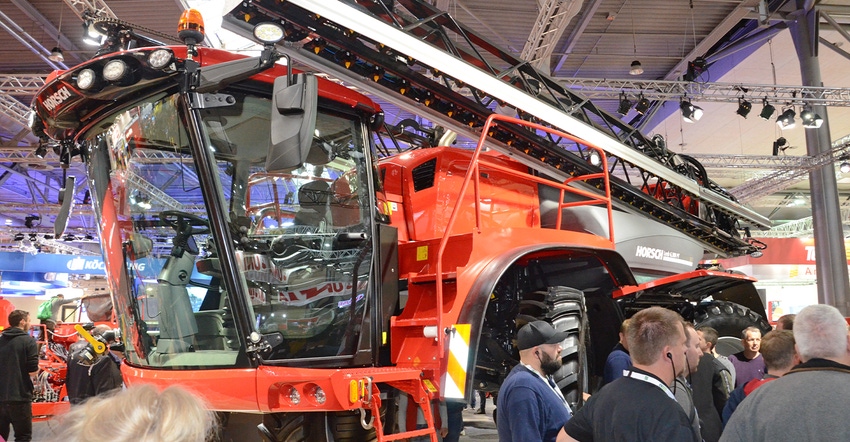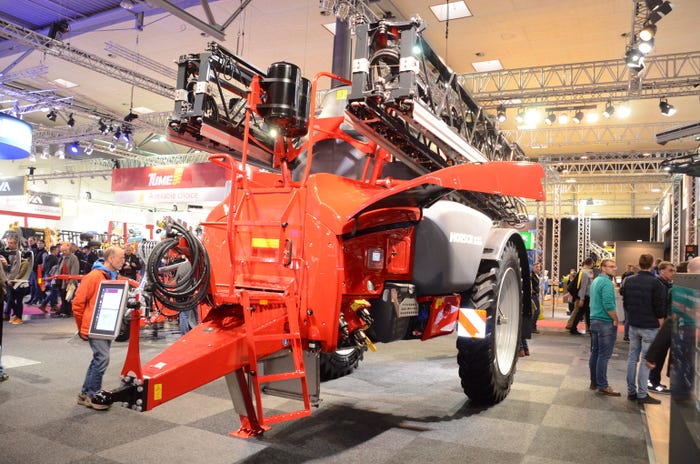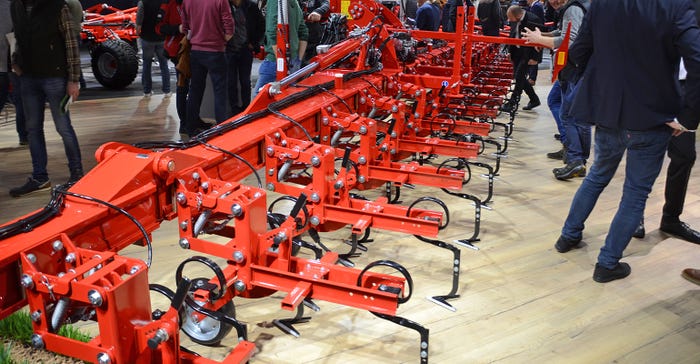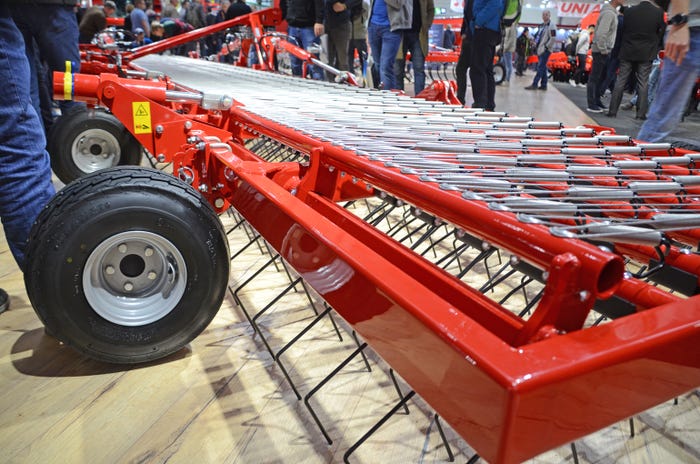January 7, 2020

The crop protection sprayer market is competitive in North America, with a range of domestic and international players serving farmers. And the number is going to rise starting in 2020, as Horsch brings its sprayer technology to market.
“We’ll have a North American version of the Horsch sprayer that will start in western Canada in 2020,” says Jeremy Hughes, northern regional business manager, Horsch. “We’ll also have the new sprayer at our Downs Farm in Illinois for our summer field day.”
The aim, Hughes says, is to have the sprayer in the U.S. market for the 2021 season, but what is Horsch bringing to the market that sets it apart from other sprayers?
“First is droplet management,” Hughes says. “There are all kinds of different systems, including pulse width management and other nozzle technology, out there. What we’re really looking to accomplish, and the fundamental question to answer with the new sprayer is, how are we going to mitigate drift as much as possible?”
He notes that the best way to mitigate drift and maximize coverage is to work with a smaller droplet size; but to do that, the machine must get the nozzle as close to the target as possible. “We need to be 10 to 12 inches off the target, and to do that, we need a 10-inch nozzle spacing,” he points out.
He says that the conventional approach with nozzles 20 inches apart means that the boom has to ride within 2 feet of the crop, but many sprayers have booms riding 30 to 36 inches above the crop. He claims that the 20-inch standard is still a disadvantage and requires a larger droplet size, which hinders coverage
 .
.
PULL-ALONG SPRAY TECH: The same nozzle technology to be found in the Leeb self-propelled sprayer coming to North America can be found in the Leeb pull-type version.

Field research
Horsch is known for its own research development work, tinkering with equipment to achieve different performance standards from the competition. Hughes explains that through its own research, Horsch has learned that drift mitigation — and control — can’t be done through “some nozzle tech or other different Band-Aids on sprayers; it’s about getting closer to the target, so the droplet spends less time in the air and has less time to drift off-target.”
That smaller droplet matters. Hughes explains that with a 200- to 250-micron droplet size in every square inch of plant surface, there are 1,400 points of contact, or coverage. If the droplet size increases to 500 microns, in an effort to control drift, there are only 90 points of contact in that same square inch.
“When you start talking about general things like weed resistance or a quality fungicide application — and you’re talking larger droplet size — at the end of the day, it’s like using a rifle to shoot a duck. We’re shooting with a shotgun,” he says.
He points to Palmer amaranth, kochia and other resistant weeds noting that many have small leaf surface area. Hughes says coverage matters.
Another factor the new sprayers will bring to market is a tank with a full system cleanout. The system includes recirculating booms that bring material back to the tank. “We start the cleanout process as you finish spraying the field. Most sprayers use a dilution process for cleanout; we use a displacement system,” he says. “We’re pushing product out of the system. There are no dead ends in our system, and we’re getting a total cleanout.”
Tank and sprayer cleanout have been blamed as a key cause of dicamba damage, with “leftovers” causing interactions that affect other crops. Hughes says that won’t be a problem with the new Leeb sprayers from Horsch.

SUPER-CULTIVATOR: The Transformer cultivator is designed to provide precision cultivation, using individual row shut-off and advanced guidance for improved precision.

Maximizing performance
The new Leeb sprayers from Horsch for North America will be made taller, operating with a 6-foot-plus operating height. The machine is also designed with a true 50-50 weight distribution for better traction on hills. And the North American version will be 3 to 4 tons lighter than competitive models, too.
The Claas-built cabs on the new sprayers contain tech and controls designed by Horsch, including a control knob not unlike that found in a BMW for managing screen information. In addition, the machine has full ISOBUS integration for steering and rate control, so a farmer can add the technology system which works best for his operation. “For precision application, a grower can use Trimble, Ag Leader, John Deere, Topcon or other ISOBUS-compatible systems with this sprayer,” Hughes says.

WEED-STOPPER: The Cura, when pulled behind a tillage tool, helps with weed control and leveling the ground for improved performance. It’s part of a total system approach to field management.

New tillage tools
Horsch is also rolling out a couple new tillage tools for the North American market. The Transformer has been developed for Europe, where weed resistance and reduced chemical choice are pushing new ways to cultivate. The system uses a vision system and GPS data to provide row shut-off during tillage. Individual tillage rows rise up when not needed as the machine moves through the field.
Hughes says resistant weeds, and the rise of organic production, are bringing returning interest to row cultivation. “The key with the Transformer is knowing how to raise and lower each unit. We’re using the same technology for individual row shut-off that you would use with a planter,” he says. “And this cultivator steers independently from the tractor. It has eyes off the back that can see where the cultivator is going, and keep it in line.”
He notes that with this system, the days of “cultivator blight” are over.
Another tool coming to market is the Cura, a machine designed to go over the ground and help with early-season weed control. The Cura would run behind the Joker tillage tool to help with weed control.
“When you combine all these tools together — with the Maestro for planting, the Transformer for cultivating and the Cura behind the Joker for weed control — you get a complete system for crop management,” Hughes says. “And we’re working with professional farmers that want to initiate organic systems. These tools will help make that possible.”
About the Author(s)
You May Also Like






